This pub is closed permanently. Your nearest Wetherspoon pub: The Moon Under Water
Flora Sandes came to Thornton Heath with her father, who was a Vicar of St Pauls in 1895. During World War I, she served as a nurse in Serbia and rose to the rank of Sergeant Major in the Serbian army. Although seriously wounded, she remained in active service until 1922, the only British woman to enlist as a soldier in World War I and bear arms in battle.
Prints and text about Flora Sandes.
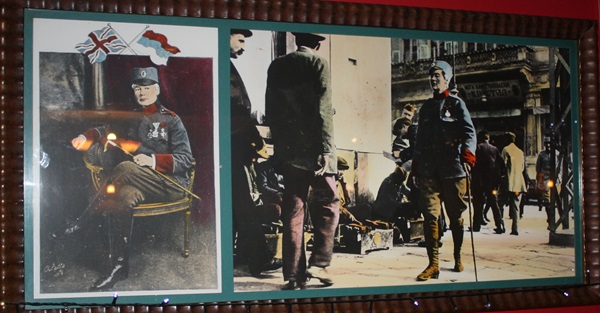
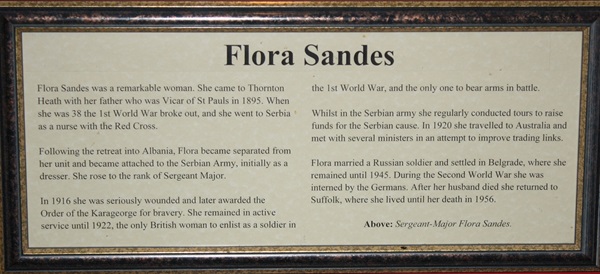
The text reads: Flora Sandes was a remarkable woman. She came to Thornton Heath with her father who was Vicar of St Pauls in 1895. When she was 38 the 1st World War broke out, and she went to Serbia as a nurse with the Red Cross.
Following the retreat into Albania, Flora became separated from her unit and became attached to the Serbian Army, initially as a dresser. She rose to the rank of Sergeant Major.
In 1916 she was seriously wounded and later awarded the Order of the Karageorge for bravery. She remained in active service until 1922, the only British woman to enlist as a soldier in the First World War, and the only one to bear arms in battle.
Whilst in the Serbian army she regularly conducted tours to raise funds for the Serbian cause. In 1920 she travelled to Australia and met with several ministers in an attempt to improve trading links.
Flora married a Russian soldier and settled in Belgrade, where she remained until 1945. During the Second World War she was interned by the Germans. After her husband died she returned to Suffolk, where she lived until her death in 1956.
Text about Thornton Heath Cricket Club.
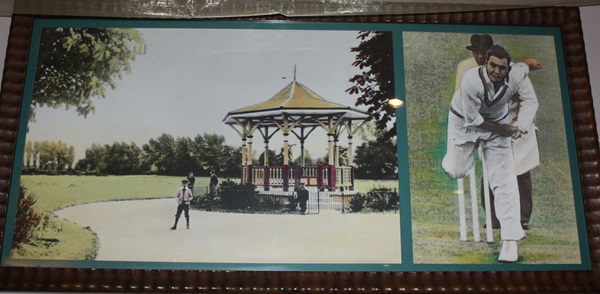
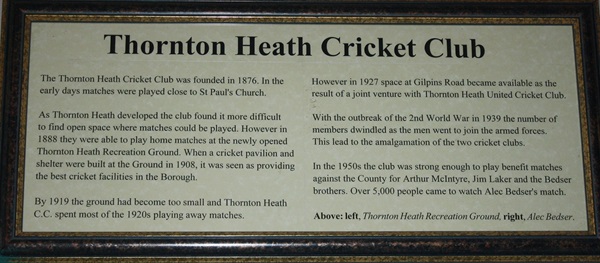
The text reads: The Thornton Heath Cricket Club was founded in 1876. In the early days matches were played close to St Paul’s Church.
As Thornton Heath developed the club found it more difficult to find open space where matches could be played. However in 1888 they were able to play home matches at the newly opened Thornton Heath Recreation Ground. When a cricket pavilion and shelter were built at the ground in 1908, it was seen as providing the best cricket facilities in the Borough.
By 1919 the ground had become too small and Thornton Heath C.C. spent most of the 1920s playing away matches.
However in 1927 space at Gilpins Road became available as the result of a joint venture with Thornton Heath United Cricket Club.
With the outbreak of the Second World War in 1939 the number of members dwindled as the men went to join the armed forces. This lead to the amalgamation of the two cricket clubs.
In the late 1950s the club was strong enough to play benefit matches against the County for Arthur McIntyre, Jim Laker and the Bedser brothers. Over 5,000 people came to watch Alec Bedser’s match.
Above: left, Thornton Heath Recreation Ground, right, Alec Bedser.
Text about Colliers Water Farm.
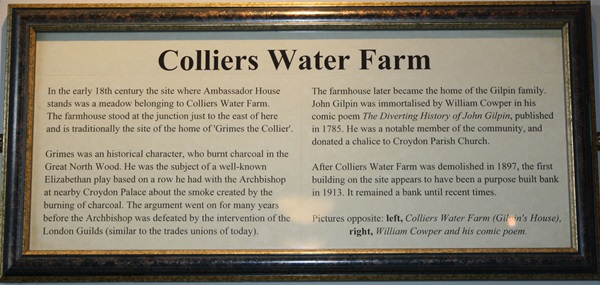
The text reads: In the early 18th century the site where Ambassador House stands was a meadow belonging to Colliers Water Farm. The farmhouse stood at the junction just to the east of here and is traditionally the site of the home of ‘Grimes the Collier’.
Grimes was an historical character, who burnt charcoal in the Great North Wood. He was the subject of a well-known Elizabethan play based on a row he had with the Archbishop at nearby Croydon Palace about the smoke created by the burning of charcoal. The argument went on for many years before the Archbishop was defeated by the intervention of the London Guilds (similar to the trade unions of today).
The farmhouse later became the home of the Gilpin family. John Gilpin was immortalised by William Cowper in his comic poem The Diverting History of John Gilpin, published in 1785. He was a notable member of the community, and donated a chalice to the Croydon Parish Church.
After Colliers Water Farm was demolished in 1897, the first building on the site appears to have been a purpose built bank in 1913. It remained a bank until recent times.
Illustrations of Colliers Water Farm.
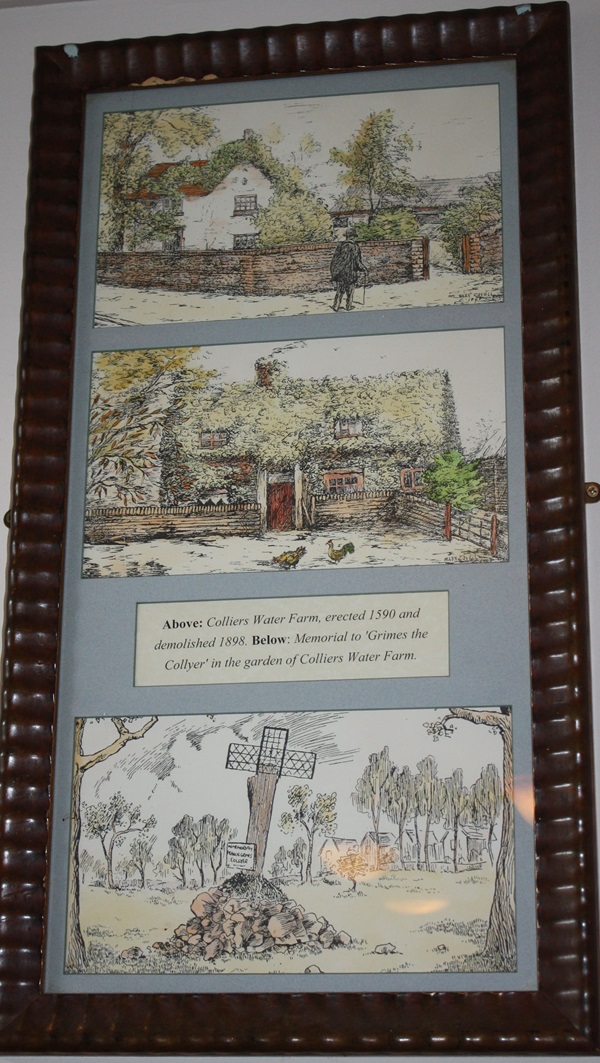
Above: Colliers Water Farm, erected in 1590 and demolished in1898.
Below: Memorial to ‘Grimes the Collyer’ in the garden of Colliers Water Farm.
Prints and an illustration of Thornton Heath Pond changing over the years.

Text about Thornton Heath Pond.
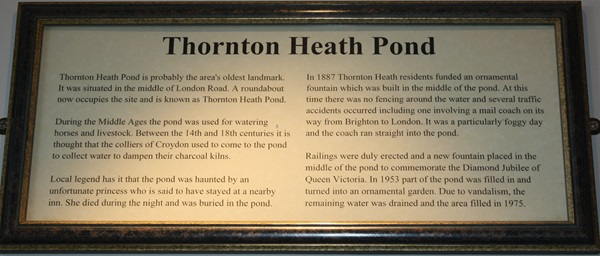
The text reads: Thornton Heath Pond is probably the area’s oldest landmark. It was situated in the middle of London Road. A roundabout now occupies the site and is known as Thornton Heath Pond.
During the Middle Ages the pond was used for watering horses and livestock. Between the 14th and 18th centuries it is thought that the colliers of Croydon used to come to the pond to collect water to dampen their charcoal kilns.
Local legend has it that the pond was haunted by an unfortunate princess who is said to have stayed at a nearby inn. She died during the night and was buried in the pond.
In 1887 Thornton Heath residents funded an ornamental fountain which was built in the middle of the pond. At this time there was no fencing around the water and several traffic accidents occurred including one involving a mail coach on its way from Brighton to London. It was a particularly foggy day and the coach ran straight into the pond.
Railings were duly erected and a new fountain placed in the middle of the pond to commemorate the Diamond Jubilee of Queen Victoria. In 1953 part of the pond was filled in and turned into an ornamental garden. Due to vandalism, the remaining water was drained and the area filled in 1975.
A photograph of High Street, Thornton Heath, c1912.
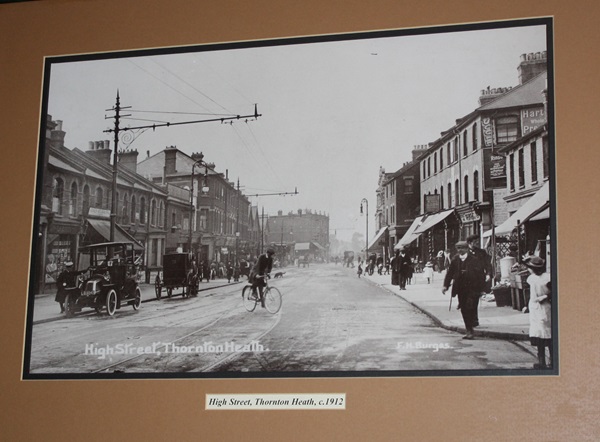
A photograph of Thornton Heath Tram Depot, c1906.

A photograph of a tram in London Road, c1908.
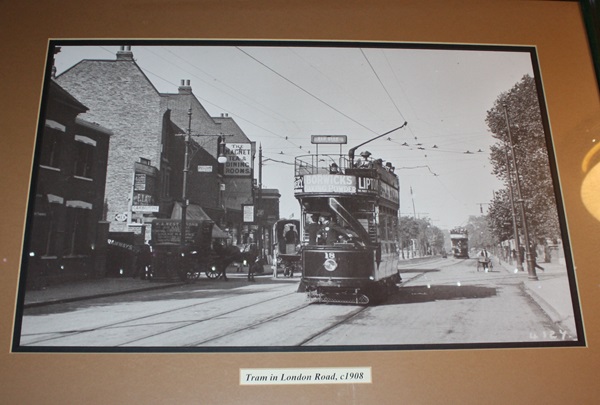
A photograph of Clock Tower, Thornton Heath, c1908.
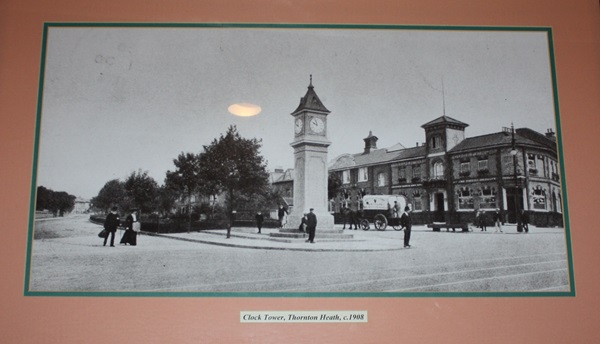
External photograph of the building – main entrance.
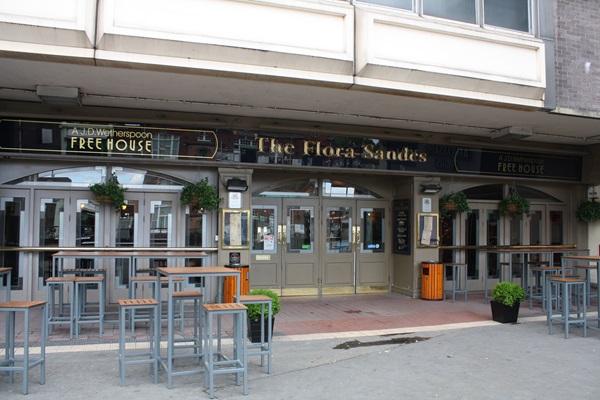
If you have information on the history of this pub, then we’d like you to share it with us. Please e-mail all information to: pubhistories@jdwetherspoon.co.uk